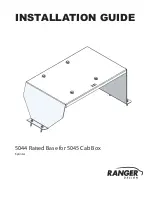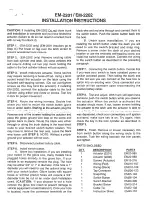
•
Always use fuel with the recommended octane rating.
•
Use a known quality gasoline, preferably a national brand.
•
Use the same side of the same pump and have the vehicle facing the
same direction each time you fill up.
•
Have the vehicle loading and distribution the same every time.
Your results will be most accurate if your filling method is consistent.
Calculating fuel economy
1. Fill the fuel tank completely and record the initial odometer reading
(in miles or kilometers).
2. Each time you fill the tank, record the amount of fuel added (in
gallons or liters).
3. After at least three to five tank fill-ups, fill the fuel tank and record
the current odometer reading.
4. Subtract your initial odometer reading from the current odometer
reading.
5. Follow one of the simple calculations in order to determine fuel economy:
Calculation 1:
Divide total miles traveled by total gallons used.
Calculation 2:
Multiply liters used by 100, then divide by total
kilometers traveled.
Keep a record for at least one month and record the type of driving (city
or highway). This will provide an accurate estimate of the vehicle’s fuel
economy under current driving conditions. Additionally, keeping records
during summer and winter will show how temperature impacts fuel
economy. In general, lower temperatures give lower fuel economy.
Driving style — good driving and fuel economy habits
Give consideration to the lists that follow and you may be able to change
a number of variables and improve your fuel economy.
Habits
•
Smooth, moderate operation can yield up to 10% savings in fuel.
•
Steady speeds without stopping will usually give the best fuel
economy.
•
Idling for long periods of time (greater than one minute) may waste fuel.
•
Anticipate stopping; slowing down may eliminate the need to stop.
•
Sudden or hard accelerations may reduce fuel economy.
2006 Econoline
(eco)
Owners Guide (post-2002-fmt)
USA
(fus)
Maintenance and Specifications
218
















































